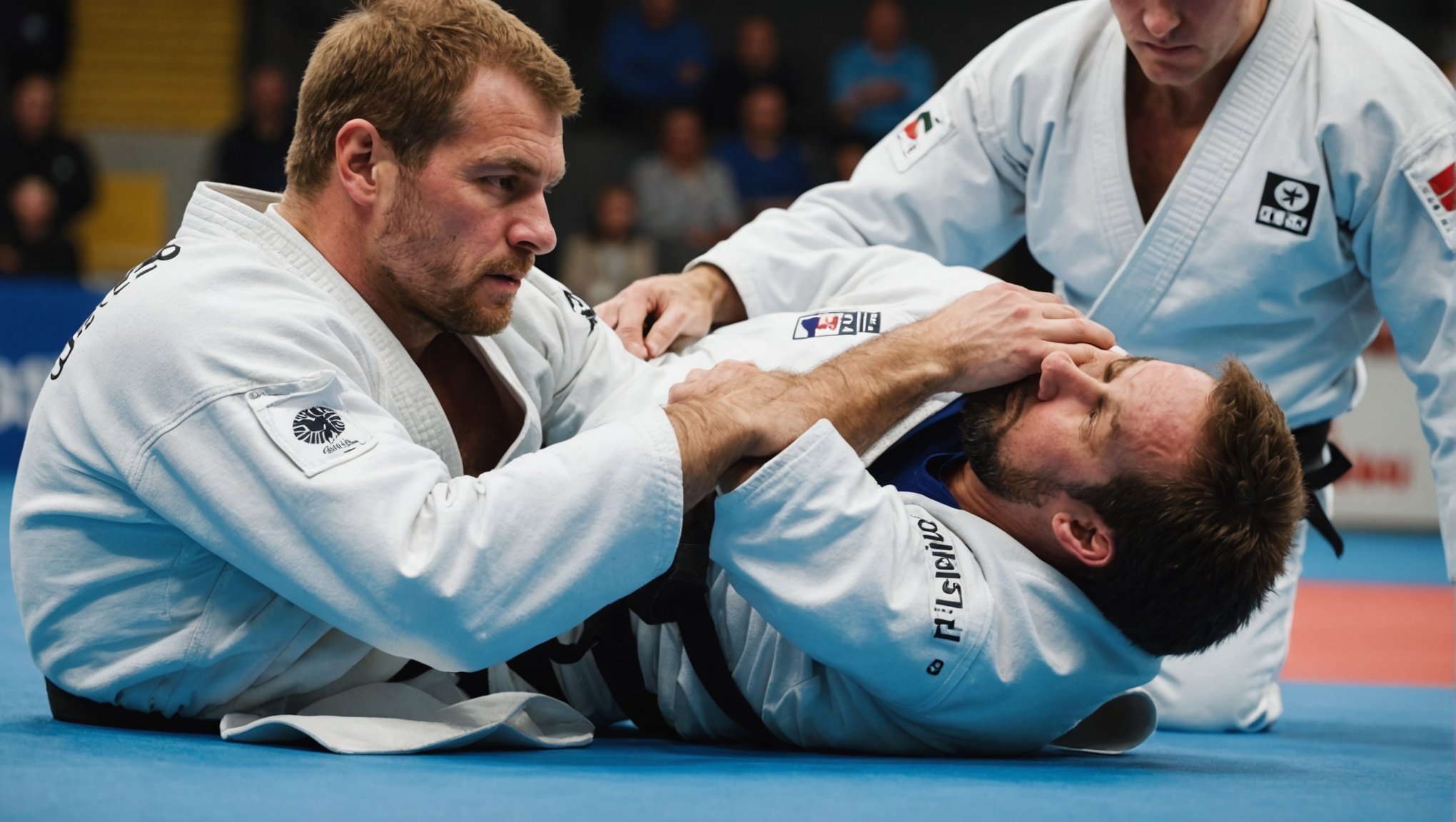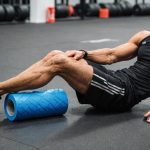Shoulder injuries are common among judo practitioners, impacting performance and participation levels. Understanding how to manage these injuries effectively can significantly enhance recovery and long-term health. This guide offers practical strategies tailored specifically for judo enthusiasts across the UK, emphasizing prevention, rehabilitation, and ongoing care. By prioritizing these approaches, athletes can maintain their competitive edge while minimizing the risk of re-injury. Explore these insights to protect your shoulders and bolster your judo journey.
Overview of Shoulder Injuries in Judo
In the dynamic world of judo, shoulder injuries are not only common but can also significantly impact an athlete's performance and training regimen. Understanding the prevalence and types of these injuries is crucial for both prevention and effective management.
Have you seen this : Unlocking Speed: Strategies UK Fencing Athletes Use to Enhance Reaction Times in Competition
Prevalence and Types of Shoulder Injuries
Shoulder injuries in judo are prevalent due to the sport's intense physical demands. Athletes frequently engage in throws and grappling maneuvers, which can place excessive stress on the shoulder joints. Judo athlete injuries often include shoulder dislocations and rotator cuff injuries, which are among the most common. These injuries occur when the arm is forced into awkward positions, leading to joint instability or tears in the surrounding muscles and tendons.
- Dislocations: Occur when the upper arm bone pops out of the shoulder socket. This can result from a forceful impact or an awkward fall.
- Rotator Cuff Injuries: Involve tears in the muscles and tendons that stabilize the shoulder. These can develop over time due to repetitive motion or sudden trauma.
Impact on Performance and Training
The impact of shoulder injuries on a judo athlete's performance cannot be overstated. Such injuries often require significant recovery time, during which athletes may be unable to train or compete at their usual intensity. This downtime can lead to a loss of strength and flexibility, further complicating the return to peak performance levels. Moreover, the risk of re-injury is heightened if proper rehabilitation protocols are not followed.
Also to discover : Unpacking Sponsorship Dynamics in the UK Combat Sports Arena: A Comprehensive Guide
In summary, shoulder injuries in judo are a significant concern, affecting both the short-term and long-term capabilities of athletes. By recognizing the common types and understanding their impact, practitioners can take proactive measures to mitigate risks and maintain optimal performance levels.
Preventive Measures for Shoulder Injuries
Understanding and implementing injury prevention strategies are vital for judo athletes to maintain peak performance and minimize downtime due to shoulder injuries.
Importance of Proper Warm-Up and Stretching Routines
A comprehensive warm-up and stretching routine is essential in judo training safety. Engaging in dynamic stretching exercises helps increase blood flow to the muscles, enhancing flexibility and reducing the risk of strains. Simple activities such as arm circles, shoulder rolls, and cross-body stretches can be very effective. These exercises prepare the shoulder joints for the intense movements involved in judo, thereby playing a crucial role in shoulder injury prevention.
Techniques for Safe Falling and Grappling
Learning and mastering techniques for safe falling and grappling are fundamental components of injury prevention in judo. Proper techniques help distribute the force of impact evenly across the body, minimizing stress on the shoulders. For instance, practicing controlled falls can significantly reduce the likelihood of dislocations. Coaches should emphasize correct form and technique during training sessions to ensure athletes can execute moves safely and effectively.
Strengthening Exercises Specifically for Shoulder Stability
Building shoulder stability through targeted strengthening exercises is another key aspect of shoulder injury prevention. Incorporating exercises such as resistance band rotations, dumbbell shoulder presses, and push-ups can enhance the muscles surrounding the shoulder joint. This increased strength supports joint stability, which is critical for enduring the physical demands of judo. A regular regimen of these exercises can significantly contribute to judo training safety by reducing the risk of injuries.
- Dynamic Stretching: Arm circles, shoulder rolls, cross-body stretches
- Safe Falling Techniques: Controlled falls, proper grappling form
- Strengthening Exercises: Resistance band rotations, dumbbell presses
By focusing on these preventive measures, judo athletes can effectively safeguard their shoulders, ensuring longevity in their sport and minimizing the impact of potential injuries.
Treatment Options for Shoulder Injuries
Exploring effective treatment options is crucial for managing shoulder injuries in judo athletes. Understanding the available strategies can help ensure a swift and successful recovery.
Initial Management Strategies
When a shoulder injury occurs, immediate action is essential to minimize damage and facilitate recovery. The RICE method—Rest, Ice, Compression, and Elevation—is a widely recommended initial management strategy. Resting the injured shoulder prevents further strain, while ice application can reduce swelling and alleviate pain. Compression using a bandage helps control swelling, and elevating the shoulder above heart level can further decrease swelling and discomfort. These steps are crucial in the early stages of judo injury management.
Role of Physiotherapy in Recovery
Physiotherapy plays a pivotal role in the recovery and rehabilitation of shoulder injuries. It involves a tailored program of exercises designed to restore strength and flexibility to the shoulder joint. A physiotherapist can guide judo athletes through specific movements that enhance mobility and promote healing. Techniques such as ultrasound therapy, massage, and joint mobilization are often employed. This comprehensive approach not only aids in recovery but also reduces the risk of future injuries, making physiotherapy an integral part of judo injury management.
Surgical Options for Severe Shoulder Injuries
In cases where shoulder injuries are severe, surgical intervention may be necessary. Surgery might be considered for conditions such as persistent dislocations or significant rotator cuff tears that do not respond to conservative treatments. Procedures can range from minimally invasive arthroscopic surgery to more extensive reconstructive surgeries. The decision to opt for surgery should be made in consultation with medical professionals, considering the athlete's specific circumstances and goals. Post-surgery, a structured rehabilitation program is vital to regain full function and return to judo training safely.
- RICE Method: Rest, Ice, Compression, Elevation
- Physiotherapy Techniques: Ultrasound therapy, massage, joint mobilization
- Surgical Interventions: Arthroscopic surgery, reconstructive surgery
By understanding and implementing these shoulder injury treatment strategies, judo athletes can effectively manage their injuries, ensuring a successful return to their sport.
Rehabilitation Strategies for Judo Practitioners
Effective rehabilitation is key to a successful recovery and return to judo practice.
Phases of Rehabilitation and Their Importance
Rehabilitation for judo shoulder injuries typically involves several phases, each crucial to ensure a complete recovery. Initially, the focus is on reducing pain and inflammation through rest and gentle movements. As healing progresses, the emphasis shifts to restoring range of motion and flexibility. This phase is essential for preparing the shoulder for more intensive exercises. Finally, the rehabilitation process culminates in strengthening and conditioning the shoulder muscles, which are vital for returning to judo training without risking re-injury.
Specific Rehabilitation Exercises for Judo Athletes
Judo athletes benefit from tailored exercises that address the unique demands of the sport. These exercises not only aid in recovery from shoulder injuries but also enhance overall performance. Key exercises include:
- Pendulum Swings: Helps in regaining shoulder mobility.
- Resistance Band Workouts: Focus on strengthening rotator cuff muscles.
- Scapular Stabilization Exercises: Essential for maintaining shoulder stability during throws.
Such exercises are integral to judo injury rehabilitation, ensuring athletes rebuild strength and flexibility effectively.
Timeline for Recovery and Return to Judo Practice
The timeline for shoulder rehabilitation in judo can vary based on the severity of the injury and the athlete's adherence to the rehabilitation program. Typically, the initial recovery phase may last from a few weeks to several months. During this period, athletes gradually progress through the rehabilitation phases, guided by healthcare professionals. A well-structured rehabilitation plan can facilitate a safe return to judo practice, minimizing the risk of further injuries.
Recovery Milestones:
- Initial Phase: Pain management and inflammation reduction
- Intermediate Phase: Restoring range of motion
- Final Phase: Strengthening and conditioning
By following these structured rehabilitation strategies, judo practitioners can effectively navigate their recovery journey, ensuring a successful return to the mat.
Case Studies and Expert Insights
Exploring real-world experiences and professional perspectives on overcoming shoulder injuries in judo.
Real-Life Case Studies of Judo Practitioners
Real-life judo injury case studies provide valuable insights into the challenges and triumphs faced by athletes. One such case is that of a national-level judo athlete who suffered a severe rotator cuff injury during a competition. Through a combination of sports physiotherapy and a structured rehabilitation program, the athlete was able to return to the mat within six months. This journey highlights the importance of early intervention and adherence to a personalized recovery plan.
Another example involves a young judo practitioner who experienced recurrent shoulder dislocations. With the guidance of a sports physiotherapist, the athlete underwent a tailored exercise regimen focusing on shoulder stability and strength. This proactive approach not only facilitated recovery but also prevented future injuries, emphasizing the role of targeted rehabilitation strategies.
Interviews with Sports Physiotherapists
Expert opinions on judo injuries are crucial for understanding effective management strategies. In an interview, a leading sports physiotherapist highlighted the significance of integrating psychological support into the recovery process. "Addressing the mental aspect is just as important as physical rehabilitation," they noted, underscoring the need for a holistic approach.
Another physiotherapist emphasized the importance of individualized treatment plans. They explained, "Every judo injury is unique, and so should be the recovery strategy." This insight reinforces the necessity of customizing rehabilitation programs to meet the specific needs of each athlete, ensuring optimal outcomes.
Insights into the Psychological Aspect of Injury Recovery
The psychological impact of judo injuries can be profound, affecting an athlete's confidence and motivation. Understanding this, sports professionals advocate for incorporating mental health support into the rehabilitation process. Techniques such as visualization and goal-setting are often recommended to help athletes maintain a positive outlook and stay motivated during recovery.
- Visualization: Imagining successful performance to boost confidence
- Goal-Setting: Establishing achievable milestones to track progress
- Support Networks: Building a strong support system with family, coaches, and peers
These strategies not only aid in physical recovery but also play a critical role in addressing the psychological challenges associated with judo injury recovery. By focusing on both physical and mental aspects, athletes are better equipped to overcome setbacks and return to their sport with renewed resilience.
Resources and Support in the UK
Exploring available resources and support networks for judo practitioners dealing with injuries.
Directory of Sports Physiotherapists Specializing in Judo Injuries
In the UK, a comprehensive directory of sports physiotherapists is available for judo practitioners seeking specialized care for judo injuries. These professionals are equipped with the expertise to address the unique demands of the sport, offering tailored rehabilitation programs. The sports health services UK provide access to physiotherapists who focus on shoulder injuries common in judo, enabling athletes to receive precise and effective treatment.
Support Organizations and Networks for Judo Practitioners in the UK
Support organizations play a crucial role in the recovery and well-being of judo athletes. In the UK, several judo support networks offer resources and guidance to practitioners. These networks facilitate connections among athletes, providing a platform for sharing experiences and advice. By engaging with these organizations, judo practitioners can access valuable insights and emotional support, which are essential for navigating the challenges of injury recovery.
- British Judo Association: Offers resources and support for injury management.
- SportsAid: Provides financial assistance and mentoring to young athletes.
- UK Sport: Supports elite athletes with comprehensive health services.
Online Resources for Education on Injury Management and Prevention
The internet offers a wealth of online resources dedicated to educating judo practitioners on injury management and prevention. These platforms provide access to articles, videos, and expert advice on maintaining sports health. By utilizing these resources, athletes can learn about effective injury prevention strategies, ensuring a safer training environment. Additionally, online forums and communities allow for the exchange of tips and experiences, fostering a supportive network for judo enthusiasts.
In summary, the UK offers a robust array of resources and support systems for judo practitioners, ensuring they have the necessary tools to manage and prevent injuries effectively. Through specialized physiotherapists, supportive networks, and educational platforms, athletes can enhance their recovery journey and return to the sport with confidence.













